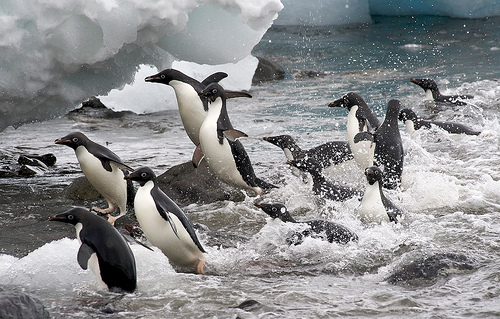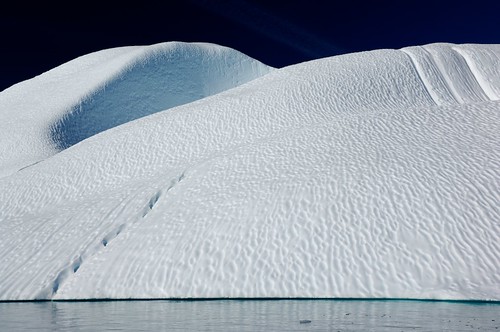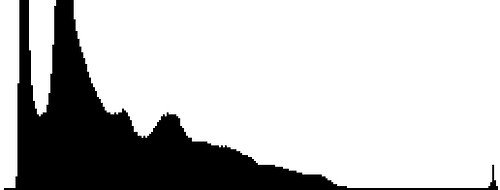Today’s cameras are marvels of modern electronics, their ability to compute the correct exposure and lock focus onto the fastest of moving objects would have been unthinkable just a few years ago. So with this in mind, why should you shoot manual focus or exposure. Well the answer is two fold, firstly even the very best of today’s cameras are not infallible, secondly, and simply, learning to shoot manually will make you a better photographer.
Nailing Manual Focus Like a Pro
So lets start with manual focus. Taking the focusing decision away from the camera opens up many more creative possibilities and can actually speed up your photography. How many times have you wanted to focus on something on one third of the frame and found the camera trying to override you. Most cameras allow you to lock focus with a half press of the shutter but this can be fiddly and frustrating. Another area that can be problematic is low light photography. Switch that lens over to M to get the best results.
There are a number of methods to focus manually:
- Use the camera’s focus screen, although the focus screen aids of the 35mm age are largely gone now, most DSLR’s have reasonably bright viewfinders. Also if your camera’s viewfinder had diopter adjustment, make sure you set this to your eyesight before shooting.
- You can use the camera’s in built indicators. Most cameras will have little icons in the viewfinder showing which direction to turn the lens to get focus on the subject. Don’t forget that the focus point will be where the viewfinder’s focus square is pointing, so make sure this is one the subject when you focus and recompose as required.
- Pre-focussing – this is a great technique for shooting sports such as motor racing. Basically, you focus on a point where, for instance, the car is going to pass and then with the camera on continuous mode, fire away.
- Focus on infinity. By turning your lens to the infinity mark when shooting distant subjects such as landscapes, you will guarantee that much of your image will be in focus.
The Secrets to Manual Exposure
So lets have a look at manual exposure. Switching your camera to the M exposure mode can be one of the most rewarding and educational things that you can do in photography. Not only does it slow you down and make you consider the shot more, it can also teach you the fundamental relationship between, shutter speed, aperture and light. On most DSLR’s getting the correct exposure in manual mode is as simple as getting a series of icons into the middle of the scale in your camera’s viewfinder. If the icons are veering towards the plus sign, you are over exposing, towards the minus you are underexposing.
Because the camera's meter may not always be right, we may not want to put the icon bang in the middle.
Understand Your Histogram for Even Better Results With Manual Exposure
One of the very best tools our cameras have is the histogram, by learning how the histogram works we can really start to understand exposure. The histogram gives us a good, if not perfect representation of the quality of the exposure.
To understand the histogram imagine it as a bucket of light. To the left we have all the darker light and to the right we have all the lighter light. Our aim is to keep all of our light inside the bucket. If it is flowing out of the left side, we are underexposing. To counter this we can reduce our shutter speed, for instance from 1/125 of a second to 1/60 of a second, or open our aperture from say f8 to f5.6. If the light in bucket is spilling out to the right, we are over exposing, now we have to increase our shutter speed or close down our aperture.
histogram by LeighMilwardRMIT, on Flickr
So what happens to an image when we change our aperture or shutter speed?
Shutter Speed :
- Decreasing – More chance of blur in moving subjects and an increased likelihood of camera shake
- Increasing – More likely to freeze moving subjects and reduced chance of camera shake.
Aperture :
- Wider Aperture – A more shallow depth of field, i.e the amount of area in focus in front and behind the point of focus
- Smaller Aperture – A larger depth of field, useful for Landscapes.
Another factor to consider when shooting manual exposure is the metering mode. Most DSLR’s have two or three metering modes, Matrix, Center Weighted and Spot. Matrix metering will take readings from several zones in the frame and average them out. Center weighted will meter predominately for the center of the frame and spot metering will read only a small 5% or so, section of the center of the frame. For the most part, matrix metering will be the best, but if you are shooting with a subject predominately in the center of the frame, such as sports or wildlife then center weighted may be better. Spot metering is ideal for getting exposure right on a small part of the image such as a person’s face.
Combining these metering modes, with your knowledge of shutter speed and aperture with your camera in manual exposure mode, will allow you the ultimate control, not only over your camera but also the final image.
Jason Row is a British born travel photographer now living in Ukraine. You can follow him on Facebook or visit his site, The Odessa Files. He also maintains a blog chronicling his exploits as an Expat in the former Soviet Union









7 Comments
Jason very nice post! back in the film days when we all shot with Hassy’s in manual because we knew how to make our tools do what we wanted them to do and if you were worth your salt. One could make any image he or she desired!
Lately i find myself using an analogy more and more, the tool doesn’t make the Carpenter. It’s the Carpenter who tells the hammer what to hit, when to hit it and how hard to hit it!
Great info keep them coming!!
PJD
Hi Peter
I always wanted a Hassy, ironically I can pick one up for next to nothing now but there is so few places to process film (I am not a B&W sort of guy so home brew is not an option) I feel that the automation of modern DSLR’s means that vital technical skills are being lost, and ironically, these days, it is those skills that can make the difference between a good picture and a great picture
I know what I’ll be working on tonight. Thanks for the reminder.
I may be wrong but I disagree with the suggestion of using metering mode with manual exposure mode (M). To me, once shooting in M by controlling shutter, aperture etc, the camera “ignores” the metering and totally captures the light with respect to settings given by us. So, if I am shooting at 100 iso, 1/60 shutter speed and f2.2 aperture then whether I use evaluative/matrix or centre weighted or spot metering, my photographs will be identically exposed. Please provide your views.
That’s not the point Rudra. Manual mode gives you options. A few reasons to use manual.
Speed blur for creative reasons. Make a car blur slightly, OR knowi g that a car is going to pass you at 180MPH, you need to use at least 1/1000 shutter speed. Something the camera may not choose.
Hyper focusing. On wide angle lenses especially, at lower apertures like f11, you will have an effective focusing range of 8 feet to infinity. Faster than any auto focusing motor.
Sharpness, most lenses have a sweet spot in sharpness at certain apetures. Knowing what those are and using them will maximize your lenses capability.
But most important is knowing what technique to use for a particular opportunity
When you always shoot i manual mode it is like driving a car. You do every adjustment without thinking.
/Tomas Gillberg Sweden
Having shot film for years with two different Leicas, a tiny IIIF with an f/1.5 50mm lens, and a bulkier M3 with the same lens, using a light meter reading, the depth of field scale on the lens along with , the shutter speed set for the expected movement of the subject, and applying zone focusing concepts, I rarely lost a shot because of a focusing failure. This methodology works very well for street photography, which seems to be a popular choice for many of today’s photographers, or for action photography where there is no time to make cumbersome adjustments. It can still be done with today’s digital cameras by someone intimately aware of how to make camera adjustments quickly, but modern DSLRS, with their emphasis on autofocus, resort to cumbersome menus and auto-everything, make it a great deal more problematic than it should be. My 5D Mark II is a case in point. Only the new digital Leicas [$$$$$$$$$] and the Fuji X-T1 [$$$$$] seem to permit returning photography to a state where some greater level of control by the photographer can be exercised over his medium.